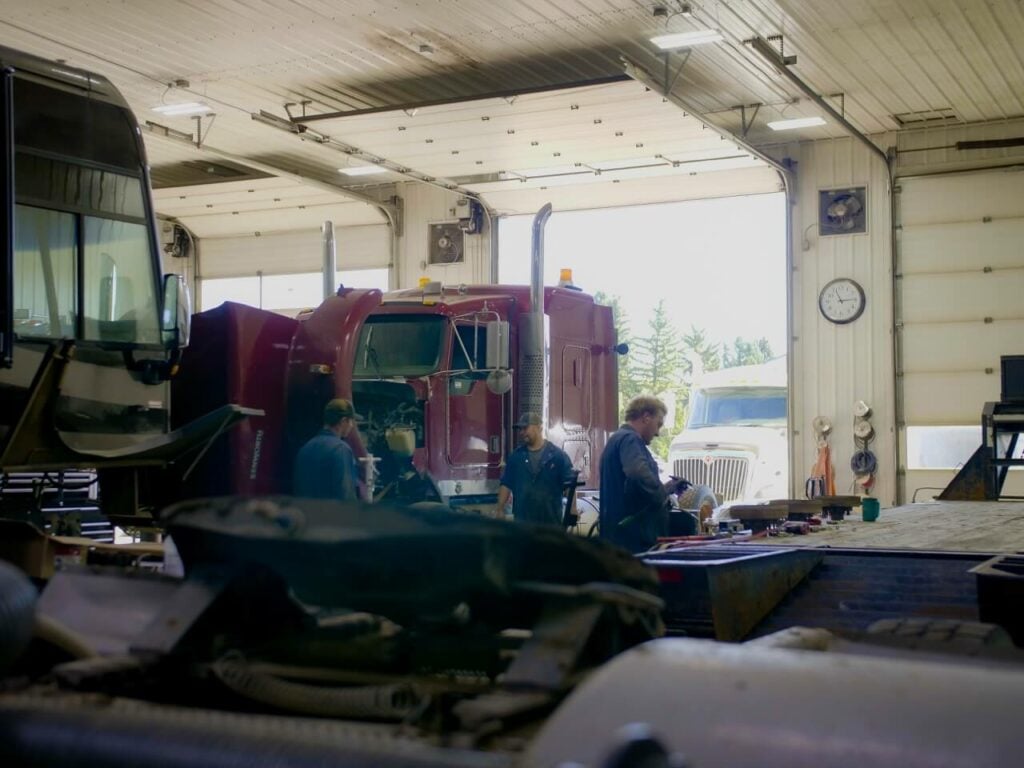Better safe than sorry. Especially when it comes to the state of your semi-truck. There are certain things on your heavy-duty truck that can benefit from preventive maintenance.
The most obvious example of this would be rust, damaging your truck, and even posing a safety hazard. Rust can appear underneath your truck, around body panels, and in the fuel tank.

An engine tune-up is a must if you’ve been running your engine for 100,000 miles or more. This can prevent a major breakdown at a critical moment, so staying ahead of the curve is important.
Some other parts that may need an inspection or even replacement after 100,000 miles include your
- Alternator
- Battery cables and terminals
- Brake pads & rotors
- Ignition coils
- Fuel filter(s)
- Transmission fluid lines & fittings
- Filters for mechanical systems
Solutions for Preventative Maintenance
Preventive maintenance for rust could include removing all the surface rust surrounding the area to be repaired, having it professionally sanded down, so no bumps or ridges are present, and properly priming it before painting with either a rust preventative paint or an anti-rust primer.
After that, it’s all about checking things like oil pressure, mounts, driveshafts, electrical components, braking systems, and anything that could be slightly damaged and cause problems down the line. The goal is to catch it early and fix it before it can cause any real damage.
For example, if you don’t replace your fuel filter every so often, it could get clogged and create poor engine performance or even a check engine light to appear on your dash.
Preventive maintenance for your engine tune-up is also best performed by a professional mechanic. They’ll have the necessary equipment to check spark plugs, ignition coils, valves, fuel pressure (to check for leaks in the system), and more.
Frequently Asked Questions
The ideal preventative maintenance schedule depends heavily on your specific truck, its age, and its typical operating conditions. While a common interval for a basic service is every 10,000 to 15,000 miles, it is crucial to follow the manufacturer’s recommended service intervals as a baseline. For trucks operating in severe conditions—such as heavy hauling, frequent idling, or driving on rough terrain—more frequent inspections and fluid changes may be necessary to ensure optimal health and performance.
Preventative maintenance is the most effective strategy for maximizing the safety, reliability, and profitability of your heavy-duty truck. Regularly scheduled service helps identify and resolve minor issues before they can escalate into major, unexpected breakdowns, which significantly reduces costly downtime and expensive emergency repairs. A consistent preventative maintenance program extends the life of critical components, improves fuel efficiency, ensures regulatory compliance, and ultimately protects the value of your investment.
While a preventative maintenance schedule is the best approach, your truck will also give you signs it needs immediate attention. Be aware of any new or unusual noises, vibrations, or changes in handling. A drop in fuel economy, a loss of engine power, or the appearance of any dashboard warning lights are clear indicators that service is required. Additionally, visible fluid leaks, excessive smoke from the exhaust, or brakes that feel soft or unresponsive are critical safety signs that should be addressed without delay.
Schedule Semi Truck Service at Inland Kenworth
To schedule service, fill out the form below or find the nearest location to you and get in touch.

